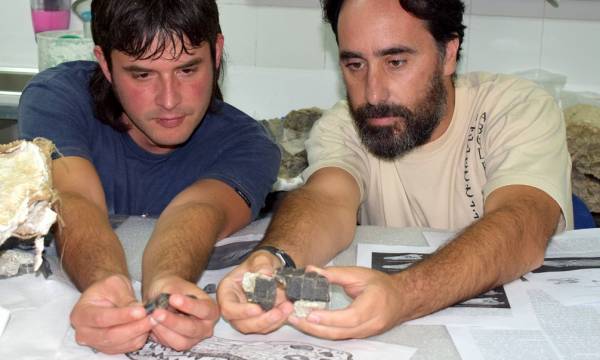Paleontologists of NOVA School of Science and Technology, Eduardo Puértolas Pascual and Octávio Mateus, published in Zoological Journal of the Linnean Society.
Small skeleton of the Jurassic of Lourinhã shows the evolution of crocodiles’ armour. A small ancestor of crocodiles, aged 150 million, was discovered in the Jurassic rocks of Lourinhã and its quality of conservation helps explain the evolution and origin of the bone armour that exists on the skin of these reptiles.
Paleontologists Eduardo Puértolas Pascual and Octávio Mateus of NOVA School of Science and Technology and the Lourinhã Museum have just announced a new fossil of dwarf crocodilemorphomorph of The Jurassic of Portugal published in the prestigious international scientific Journal Zoological Journal of the Linnean Society.
This work is part of the scientific research work on crocodilemorphs in Portugal, which Eduardo Puértolas has been carrying out as part of postdoctoral research. Crocodilemorphs are the group of reptiles that gave rise to modern crocodiles and the fossil consists in part of a skeleton in anatomical connection of a crocodilemorph, composed of osteoderms, vertebrae, ribs and some bones of the hind limbs. In life, the animal would have less than a meter.
The fossil was recovered at Peralta Beach (Lourinhã, Portugal), in 1999, by Leandro Pereira a resident of the Municipality of Lourinhã. In 2014, with the help of Ana Luz, his friend and volunteer at the Museum of Lourinhã, Leandro donated the piece to the paleontological collection of the Museum of Lourinhã.
Público online | Como evoluiu a couraça dos crocodilos? Fóssil da Lourinhã dá pistas
RTP1 | Estudo revela que couraça dos crocodilos é diferente da dos seus antepassados

